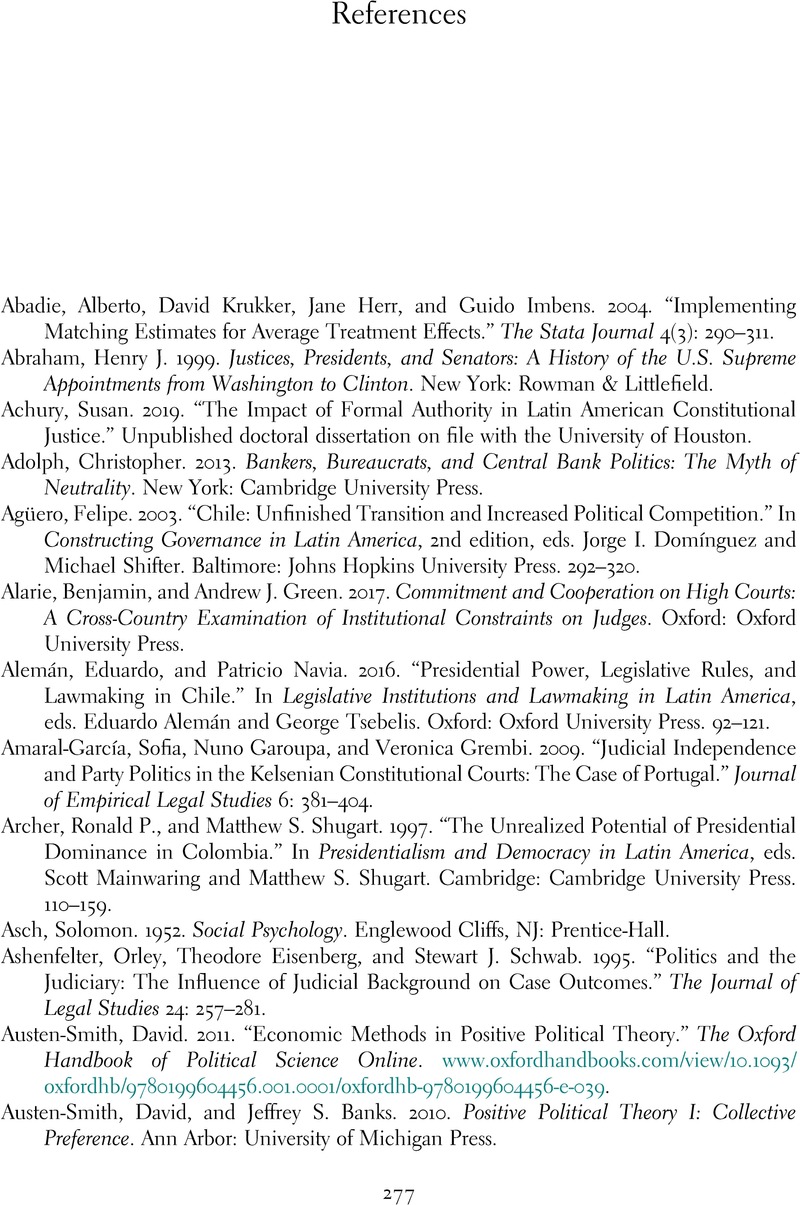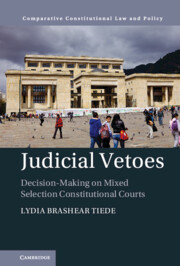Book contents
- Judicial Vetoes
- Comparative Constitutional Law and Policy
- Judicial Vetoes
- Copyright page
- Dedication
- Contents
- Figures
- Tables
- Acknowledgments
- 1 Introduction
- 2 The Implications of Mixed Judicial Selection on Decision-Making
- 3 Mixed Judicial Selection
- 4 The Chilean Constitutional Tribunal in Political Context
- 5 The Colombian Constitutional Court in Political Context
- 6 Determinants of Legal Invalidation by Constitutional Judges
- 7 Determinants of Legal Invalidation by Constitutional Courts
- 8 Weak Judicial Vetoes and Contentious Politics
- 9 Conclusion
- Appendices
- References
- Index
- References
References
Published online by Cambridge University Press: 22 July 2022
- Judicial Vetoes
- Comparative Constitutional Law and Policy
- Judicial Vetoes
- Copyright page
- Dedication
- Contents
- Figures
- Tables
- Acknowledgments
- 1 Introduction
- 2 The Implications of Mixed Judicial Selection on Decision-Making
- 3 Mixed Judicial Selection
- 4 The Chilean Constitutional Tribunal in Political Context
- 5 The Colombian Constitutional Court in Political Context
- 6 Determinants of Legal Invalidation by Constitutional Judges
- 7 Determinants of Legal Invalidation by Constitutional Courts
- 8 Weak Judicial Vetoes and Contentious Politics
- 9 Conclusion
- Appendices
- References
- Index
- References
Summary

- Type
- Chapter
- Information
- Judicial VetoesDecision-making on Mixed Selection Constitutional Courts, pp. 277 - 294Publisher: Cambridge University PressPrint publication year: 2022



